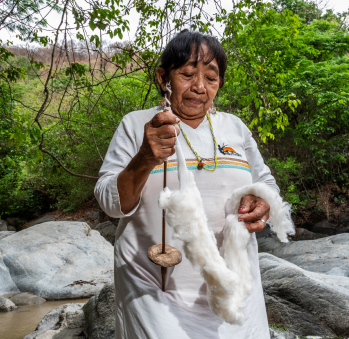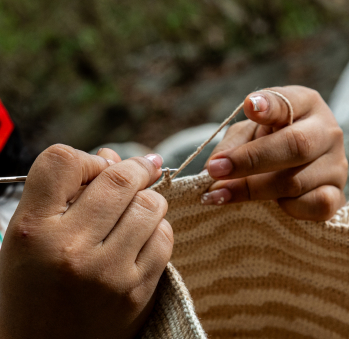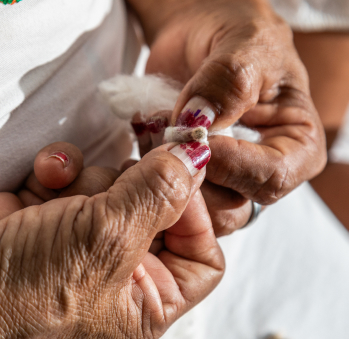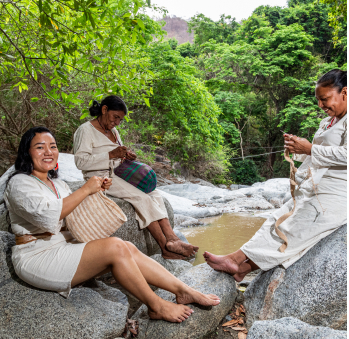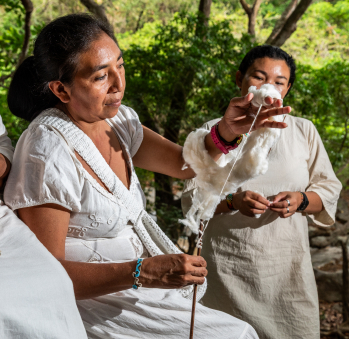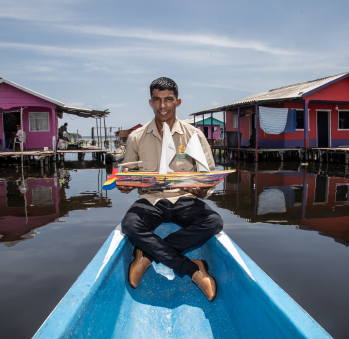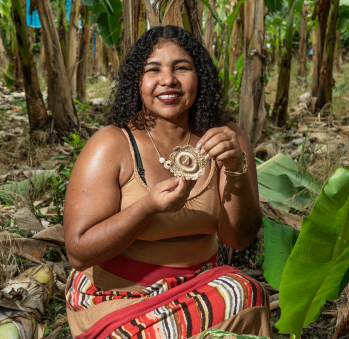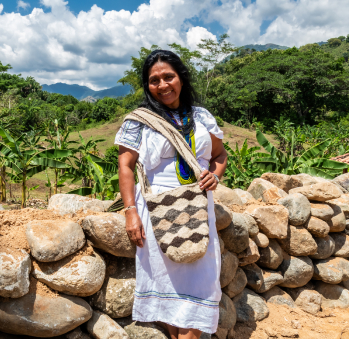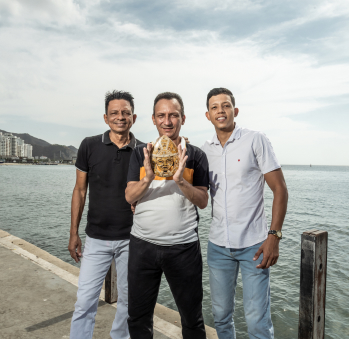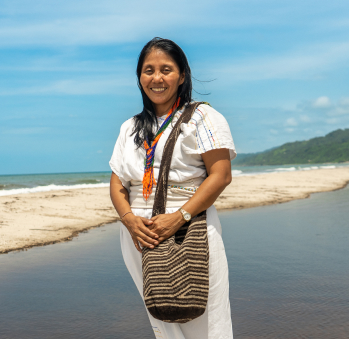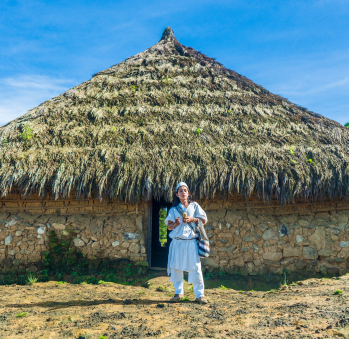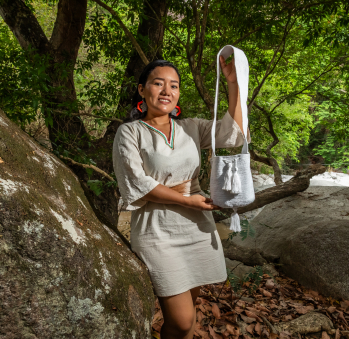Comunidad de Naara Kajmanta
Workshop: Asociación Biikrasappi
Craft: Tejeduría
Trail: Magdalena Route
Location: Santa Marta, Magdalena
“Even though she is yet to turn thirty, Esther knows she is the heiress of quite a story from her ancestors. She belongs to the Ette Enaka community, which translates to “New People.” She says that they got this name to change the picture that existed of their ancestors, the Chimila, as violent. They were a brave indigenous people who lived in the territories of what are today the departments of Magdalena and Cesar, and who viciously fought until bloody death against Spanish colonizers. Because they recognize themselves as actually being New People.
Despite this desire, she is conscious that she has lived among struggles. Esther tries to shrug off the violence, but she tells of how, in 1996, her people got forcibly displaced, as did many other indigenous groups that became trapped due to colonizers and the country’s domestic armed conflict. She was barely two and, fortunately for her, her family did everything they could to not let her childhood memories be sad. Thus, she talks of child play, songs, and dances around the fire growing up with both of her grandparents at home. Everything that does not correspond with these happy memories is, then, a reconstruction born of questions that she has been asking. It is only in this way that she understands that it was not until she was 17, as soon as she graduated high school, that she returned to her community after having studied in Santa Marta. Likewise, she grasps why her parents got divorced and, even if he is not from indigenous blood, he grew up among them and married an indigenous woman. It was him, however, who wanted neither to go live in the city nor in the new settlement where Esther now lives when things got dangerous inside the Isa Oristuna major reservation. The mothers and many of the women, Esther’s aunt among them, worried at the thought of their children getting forcibly recruited by the illegal actors who operated for so long in that region. For that reason, they left to later return and make the decision to establish a new place to live: a reservation they called Naara Kajmanta, which means Our Mother. So, her cheerfulness, her spirit, and her choice to be joyful are just that: a choice.
Talking with Esther is a journey from back to front and vice versa. In her origin tale, she recounts with her sweet voice how Abuelo Ninto is the oldest authority her people have heard of: a being that none of the living has ever seen but that is felt as a very strong energy that gets summoned permanently to protect the community and act as a foreseeing guide. It is said that a long time ago, when she hadn’t yet been born, he foretold: “Poor you. They are going to come, people who are not indigenous, and they are going to kill you. They are going to take your lands and the only way to avoid it is going to be following their culture.” This grandfather is then asked to make what is going to happen clear in dreams and to help whoever pleads for his aid avoid misfortune.
That being said, she wants her community to be seen as peaceful. Because they are and, moreover, because they live in a wonderful place that gathers river and sea water, that grants nothing but beauty and serenity. That is the reason behind craftsmanship: it is an expression of life. To our surprise, she learned her craft when she was already grown up, after going to Early Childhood Care. This is because her mother, Francia Carmona, had worked —and still does— in communal leadership, where weaving was not a priority. But Esther saw something important in the craft, something that let her understand and tell. So, when she saw Ana Felicia Granados work, she knew this was her calling. She taught her everything she knows and, thanks to how well she has done at the trade, she is not only leading the Biikrasappi —which translates to “Cotton Mochila”— Association, but she also introduced her mother to the craft, and is today the greatest saleswoman of what they do.
Esther enjoys telling that the moon, which is known in her culture as the Numirinta Mother, was who gave women this job and that, although it was born as punishment according to which they had to weave infinite amounts of cotton, it turned into the most pleasant and grateful task for everybody. That is why this is the trade that they are teaching the community’s children, thus guaranteeing the transmission of their knowledge as well. The hallmark of their culture is the white cotton mochila bag, which represents the female body. There, drawings are depicted of, for instance, different kinds of jars or arrows that tell their culture’s story. Esther wants us to visit her and her community and, as if all of this were not enough, she promises us a very particular gundul sancocho, a delicacy full of sweet potato, yucca, yam, pumpkin, and corn. “
Craft


















Artisans along the way
Artisans along the way
No puede copiar contenido de esta página









































